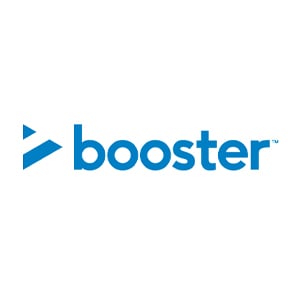If you’re reading this, congratulations! You’ve done the hardest part of budgeting – deciding to be better with money.
The next part is figuring out what your financial goals are – and what to do with the money you have to reach your goals.
Old school finance textbooks tell us that a budget is a plan of how to spend your money and setting one up will ensure financial success. Unfortunately, that’s not quite true – you still have to actively budget! But setting one up is a great first step.
The key thing to know when it comes to budgeting your money is there’s no right or wrong way of doing it. It’s all about finding a method that works for you and then refining that over time so that it becomes a central part of how you manage your money to get closer to your financial goals.
To save you scouring the internet, I’ve compiled some of the different ways a budget can help you handle your money. But why should you listen to me?
Well, I’m an average 27-year-old guy, earning an average salary that always wants to do better. I’ve gone through all the rites of passage society expects of me at my age: I’ve been through the education system, I have a few years of post-study work under my belt and want to make sure I’m doing all the right things now that future me will thank me for.
And, if I want to reach my goals of having an emergency fund, owning a home, getting married and being in a position to have children all in the next 10 years, I know I need a roadmap for my money.
Budgeting has already allowed me to smash a few barriers in my path to reaching those goals; paying off personal loans and killing credit card debt, and has helped me work out how to live more within my means. I’m now on track for a first home deposit in a few years. I’ve tried a range of different budgeting methods, from using envelopes of cash to paying myself first, and I’ve found what works for me.
Just be aware that none of this should be taken as financial advice and I am not a financial adviser. As I’ve already mentioned, I’m an average guy sharing his experiences with different budgeting methods. If you would like qualified financial advice about your situation we are happy to connect you with one of our personal advisers.
Right, let’s dive right in!
The 50/30/20 rule
This method of budgeting gives you a loose guideline for how much of your income to spend and save.
Essentially, the 50/30/20 rule encourages you to allocate your money across three categories:
- 50% of your income goes to needs
These are your basic living expenses such as your rent, mortgage payments, utilities such as power and internet, food, and transportation costs. - 30% of your income goes to wants
These are expenses that allow you to live a life comfortably within your means. These include your morning coffee, monthly subscriptions, gym memberships, Ubers, and anything else you deem ‘fun’ over ‘essential’. - 20% of your income is saved and invested
This is all the money you’ll pay your future self. Think money put into a savings account, term deposit, shares or other investments (or if you have high interest consumer debt, this portion goes to paying off your debt first).
The 50/30/20 rule is great for people who don’t want to spend a lot of time tracking their spending dollar-for-dollar and tells you how much to spend and save in simple dollar terms. Soon you’ll know how much to sock away into your savings account each pay - and future you will love you for it!
However, where this method falls short is distinguishing between wants and needs. Many people justify things they want as something they need, and the discipline of the 50/30/20 method begins to fall apart.
For example, I caught myself before I splurged $240 on new Nike’s because my old going-out sneakers were knackered. I ended up buying a pair of surprisingly cool sneakers from Kmart for $39. That saved $201 goes a long way to some of my savings goals!
Key lesson: Don’t fall for the wants vs needs trap.
The Envelope Method
The Envelope Method, like the name suggests, is a way to track exactly how much money you have in each budget category for the week, fortnight or month by keeping physical cold-hard cash in envelopes.
This system is great for those that want to stop overspending in certain areas. Eating out too much? The envelope method’s cash-based approach means that once the money budgeted for food is gone, it’s gone - unless you dig into another category’s envelope. But isn’t pulling out one envelope of cash at dinner embarrassing enough?
Booster’s budgeting app, mybudgetpal, works in a similar way. You assign a set amount of money to different expenses for your budgeting period, and you should aim to spend under that amount during the period.
However, where the envelope method falls short is that it takes a bit of effort to get your budgeting period spending in cash, and you need to be comfortable with dipping into other ‘want’ categories - think entertainment, clothing, and other non-necessary stuff if you start to fall short. You shouldn’t be dipping into your budget for essentials like rent, groceries, debt repayments or other essential expenses.
Personally, I found the envelope system really effective in sticking to my budget, as having to find an ATM to print out the cash I needed every two weeks was really tedious. It worked, but any budgeting method needs to be easy and fit in with other aspects of your life. Doing this method I learnt how much of a digital native I was, and how much I preferred to have an empty wallet - not a wallet that’s filled with cash.
Key lesson: The Envelope Method has its merits, but not so suitable for people who prefer digital cash to the real thing.
The Zero-Sum Budget
Hold your horses - this isn’t a budget where the aim is to spend ALL of your money! Rather, the aim is to give every dollar a purpose and have it assigned to a category. You no longer have ‘left over’ money after each period - your money has to go somewhere.
This doesn’t mean go out and spend as much as possible on wants and needs. In a budgeting app like mybudgetpal, you’d aim to make sure all of your income is accounted for across your needs and wants, and any leftover money is given a meaningful purpose. Having money ‘spare’ gives you a false sense of financial security and gives you an opportunity to spend money without thinking. Rather, it should have a clear purpose.
For some, this might mean giving a little more leeway to discretionary spending like entertainment, shopping or for short term savings like a holiday. For others, this might mean contributing any extra money for their long-term savings, investments and financial goals.
Key lesson: Getting used to having zero money in your account could be challenging for some. And every dollar must have a purpose – leaving cash in your account could be tempting fate for spenders.
The Pay Yourself First Model
Building on from the Zero-Sum Budget, the Pay Yourself First model focuses on putting your savings and financial goals first. By putting away money as soon as you get paid, you’re giving your future self a slice of your hard-earned cash before you get a chance to spend it on stuff in the now.
Paying yourself first is ideal for those wondering where their paycheck went at the end of each pay cycle and would rather manage their spending with a ‘rule of thumb’ rather than a strict budget.
Generally, people who use this method save a fixed percentage of their take home pay; 5% is a great start, 10% is awesome and 20% is simply incredible. I personally drop 20% of my pay into my emergency fund, 10% into my house deposit fund and squirrel away a few more percent into a Booster managed investment fund - my long term wealth vehicle - and budget the rest appropriately to cover my expenses. I know the exact dollar amounts to put into my emergency fund and investment account to achieve that 33% saving rate and as soon as I drag-and-drop those amounts in my banking app, I can focus on the things that matter to me.
Key lesson: the Pay Yourself First method does mean you’ll have to figure out the difference between your income and expenses upfront and know where you want to put that money. Budgeting apps like mybudgetpal can help work that out for you.
To Sum Up
There’s no ‘one size fits all’ approach when it comes to budgeting. There’s so many different ways to think about your money than the 4 budgeting methods above. The best thing to do is try a few different ways before settling on something that works. It’s all about finding what works for you and your goals.
My current approach uses elements of all 4 methods, and it took months of trial and error before finding what works for me. I feel much more in control of my money now than if it was confined to the first method I tried.
A budget should be flexible and accepting of who you are. Getting a budget up and running requires a little bit of hard work and commitment at the start, but the future benefits are definitely worth it.

